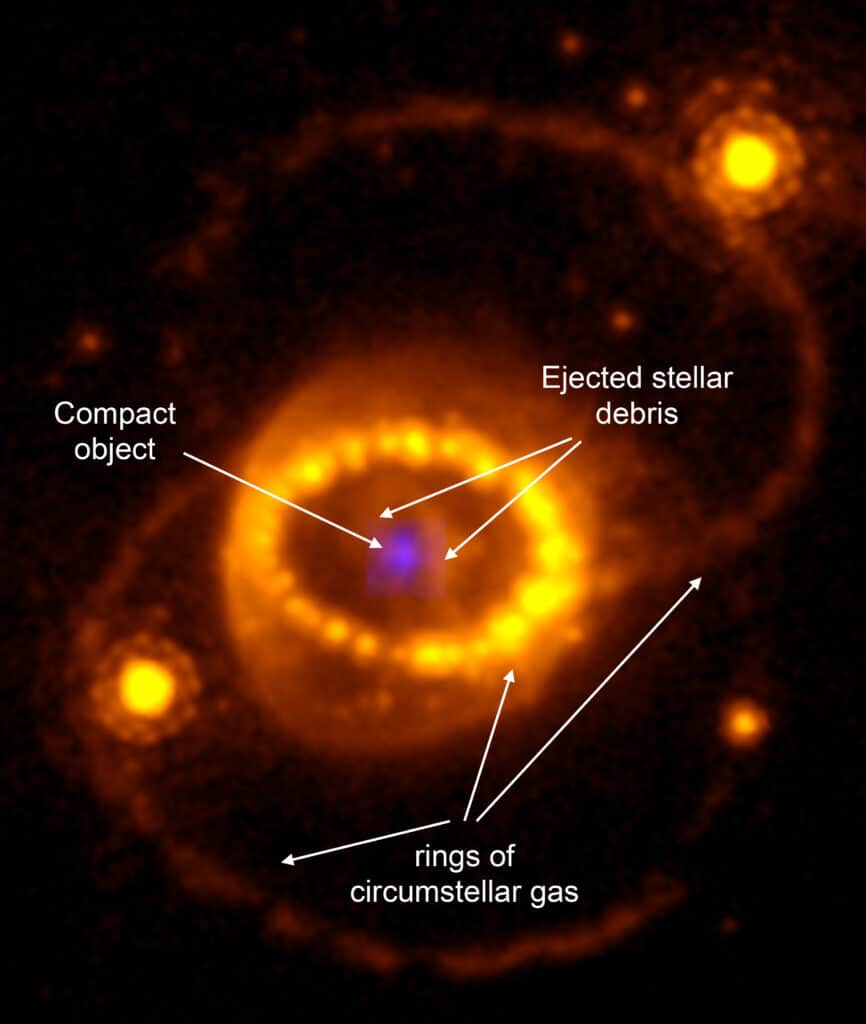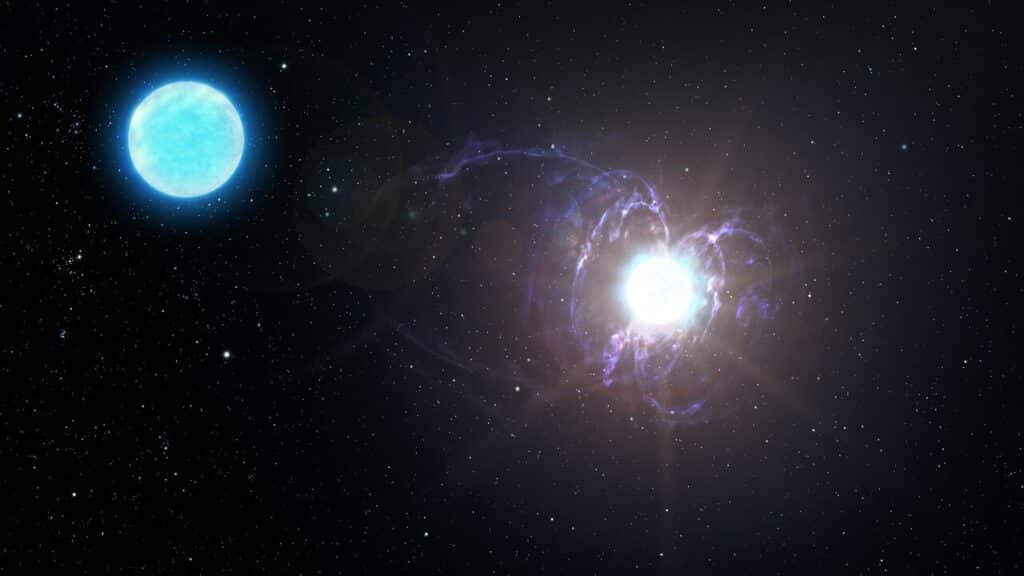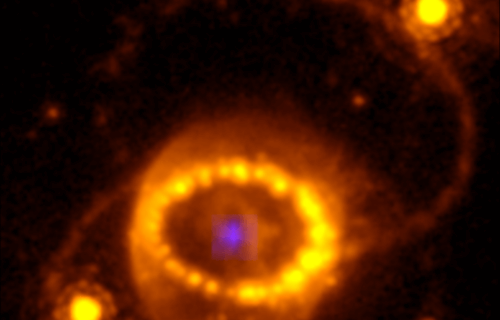LONDON — A four-decade-long mystery surrounding a star explosion has finally been solved. For the first time, researchers from University College London (UCL) found conclusive evidence of a neutron star at the heart of Supernova 1987A, which astronomers watched explode exactly 37 years ago.
Supernova 1987A, observed in the Large Magellanic Cloud, marked the brightest supernova event seen from Earth in 400 years. Such supernovae occur when stars significantly larger than the Sun collapse, resulting in a spectacular explosion. These cosmic events are crucial for the creation of chemical elements essential for life, such as carbon, oxygen, and iron. The aftermath of these explosions can leave behind either incredibly dense neutron stars or black holes.
Neutrinos, nearly massless sub-atomic particles that are notoriously difficult to detect due to their weak interaction with matter, were recorded on Earth from Supernova 1987A a day before the explosion became visible. This indicated the formation of a neutron star, yet it remained unknown whether this star had survived or collapsed into a black hole, obscured by the dust formed post-explosion.

Utilizing NASA’s James Webb Space Telescope (JWST), the team employed two instruments, MIRI and NIRSpec, to observe the supernova’s core at infrared wavelengths. Their observations revealed ionised argon and sulphur atoms, evidence suggesting the presence of a neutron star.
“Our detection with James Webb’s MIRI and NIRSpec spectrometers of strong ionized argon and sulphur emission lines from the very center of the nebula that surrounds Supernova 1987A is direct evidence of the presence of a central source of ionizing radiation. Our data can only be fitted with a neutron star as the power source of that ionizing radiation,” says study co-author Mike Barlow, professor of physics and astronomy at UCL, in a media release.
Researchers propose two scenarios for the source of this ionizing radiation: it could be emitted from the surface of a hot neutron star, which has cooled from billions of degrees at formation to about a million degrees, or from a pulsar wind nebula created by a rapidly spinning neutron star.
Supernova 1987A has been the subject of intense study since its explosion was first observed in 1987. It was the closest supernova event since Johannes Kepler observed one in 1604 and remains the most well-documented supernova to date. The detection of neutrinos from the event was particularly significant, providing direct evidence of the processes occurring at the core of a collapsing star. Yet, the fate of the neutron star formed during this cataclysmic event remained elusive until now.

“This supernova keeps offering us surprises,” notes study co-author Josefin Larsson, professor at the Royal Institute of Technology in Sweden. “Nobody had predicted that the compact object would be detected through a super strong emission line from argon, so it’s kind of amusing that that’s how we found it in the JWST.”
The James Webb Space Telescope, with its advanced instruments, has provided the necessary tools to peer into the heart of Supernova 1987A, cutting through the dust and revealing the secrets within. The discovery of ionized atoms near the center of the explosion, a unique signature predicted for a newly created neutron star, has finally offered conclusive evidence of the neutron star’s existence.
The study is published in the journal Science.
